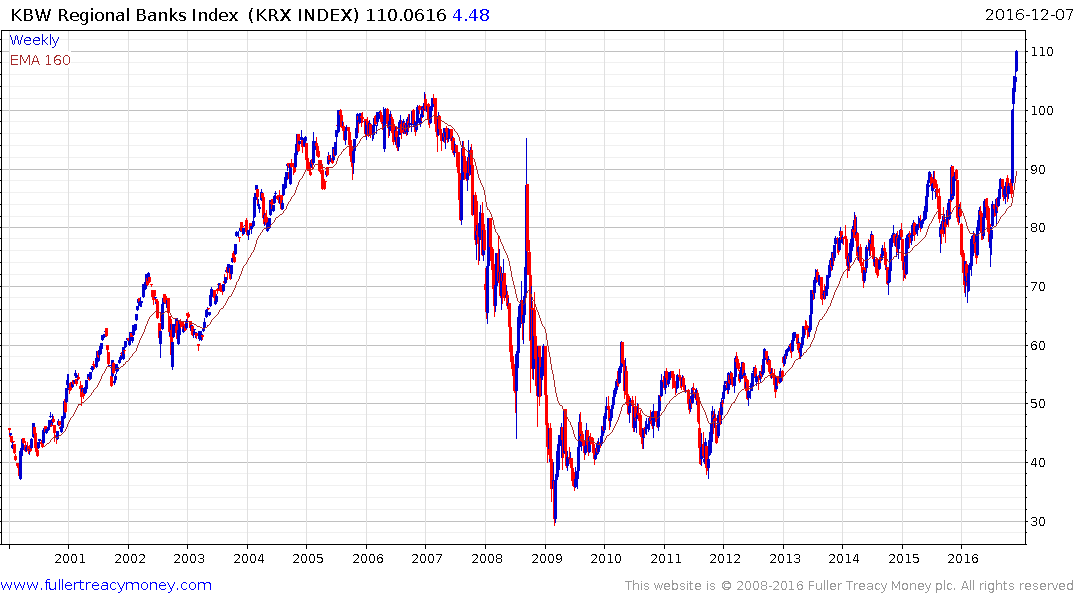Credit Outlook Q4 2016: As Benign Environment Ends, Bank Portfolios Suggest Future Stress
Thanks to a subscriber for this report from KBRA which may be of interest. Here is a section:
Even as the yield on Treasury and agency benchmark has risen, spreads for investment grade and high-yield securities have remained stable and even declined, suggesting that investors do not yet see the prospect of a Trump administration as heralding a bear market in corporate debt. Our colleague Fred Feldkamp, who has spent decades tracking the relationship between corporate bond spreads and economic performance, believes that the movement in the Treasury benchmarks is a leading indicator. “Remembering the Carly Simon song ‘Anticipation,’” Fred notes, “a widening of long-short Treasury spreads is often associated with eventual corporate spread expansion. This time I think the word is simple inflation.”
In the Treasury bond market, at least, investors are certainly anticipating an increase in inflation compared with previous levels seen over the past decade. This change in the cost of funding and inflation expectations has not yet translated into elevated corporate spreads or default rates, although a number of observers have postulated that credit costs must rise after the lengthy period of FOMC market intervention.
The latest data from the Federal Deposit Insurance Corporation for U.S. banks bears out this idea, with default rates generally continuing to fall in many asset classes other than commercial loans, but other indicators suggesting that the increase in asset prices has distorted these same markets. While overall revenue for the U.S. banking system rose almost 10% to $47 billion in Q3 2016, net interest margins fell under the continued downward pressure of the FOMC’s low interest rate policy regime. Yet as we note in our Rating Outlook for US Banks, credit performance continues to be stable at most U.S. banks.
Here is a link to the full report.
The banking sector has exploded higher on the steeper yield curve, the prospect of looser regulation, greater economic growth, lower taxes and investor enthusiasm they may be able to return to growing dividends in a more aggressive manner. At least some of these expectations will need to be achieved by the incoming US administration if the breakouts are to be sustained.

Importantly the KBW Regional Banks Index broke out to new all-time highs this week. I bet no many people thought they would see that happen again after the credit crisis yet the Index has been trended higher in a reasonably consistent manner and surged higher following the election. It is clearly overbought in the short-term so the risk of some consolidation is increasingly but a sustained move below the trend mean would be required to question the medium-term upward bias.


